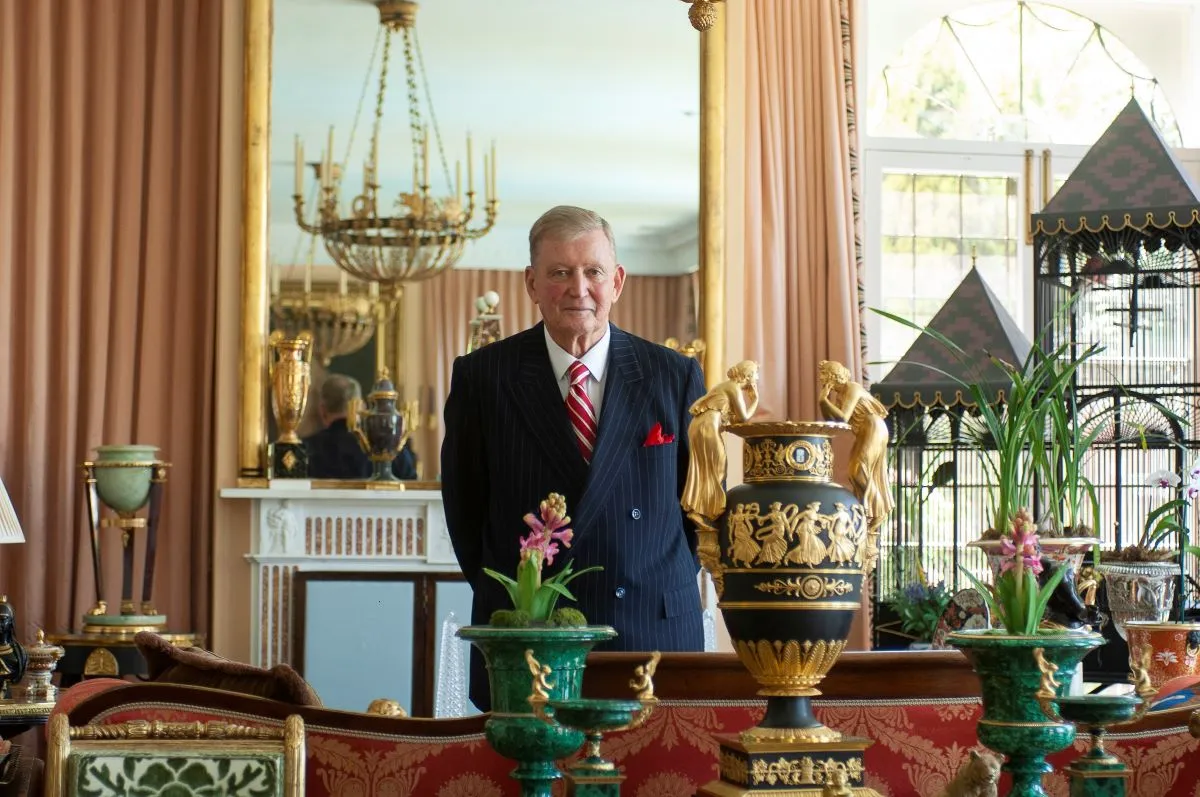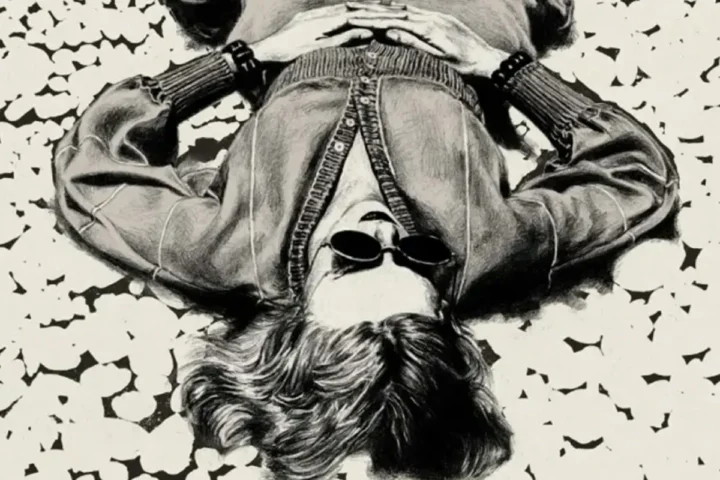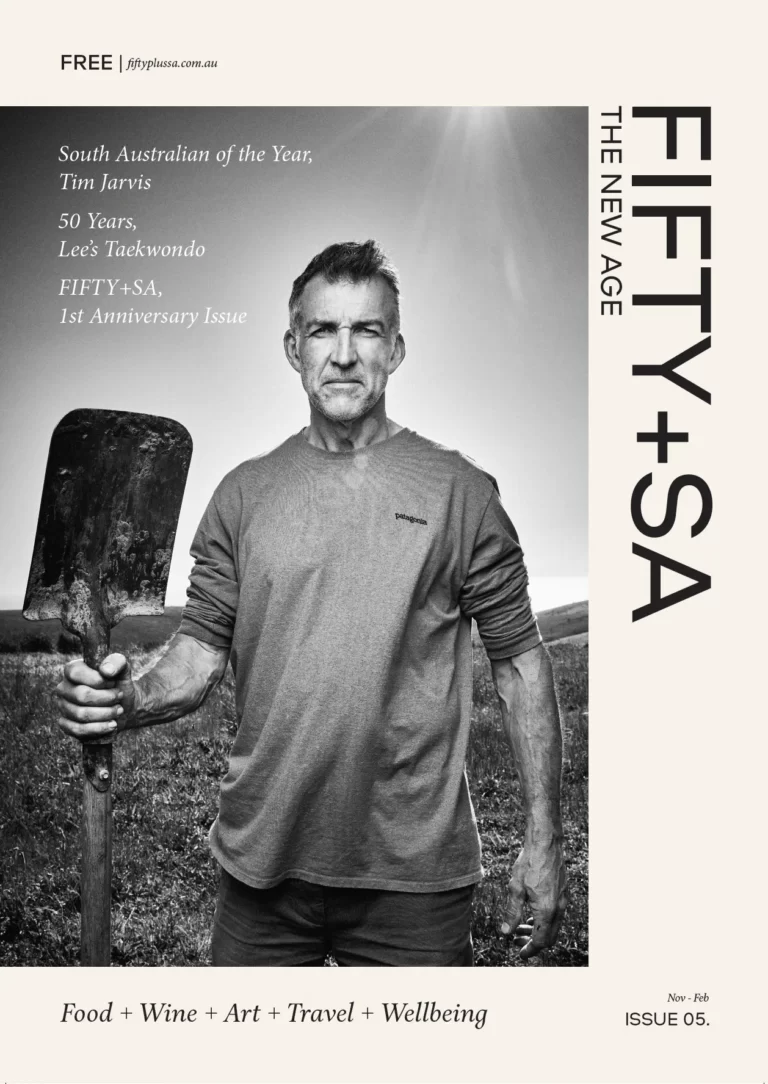There was no place in David’s home for minimalism and the sheer number of objects, ephemera, paintings and pieces with international provenances and historical value in his house boggles the mind. David was famously known to think everything looked better gilded, and so his home overflows with gold objects and gilded frames.
Inspired by the many house museums he visited around the world, David Roche established The David Roche Foundation in 1999 to preserve his own collection of some 3500 objects with the ultimate aim of converting his home, Fermoy House, into a museum.
The 1890s Federation-style villa now adjoined by a contemporary gallery designed by architect David Burton of Williams Burton Leopardi opened to the public for guided tours and curated exhibitions in 2016 just three years after David’s death at age 83.
Objects had to be removed from Fermoy House – so named after David’s French-Irish grandparents – and put in storage to make room for visitors to tour the rooms!
One of six children, David Jerome Roche was born in 1930 to a successful family. Their Adelaide Development Company provided him with an income and David straddled two very different and separate worlds. He also produced prize-winning Afghans, Kerry blue terriers and smooth-coat fox terriers in kennels on his Melbourne Street property in North Adelaide.
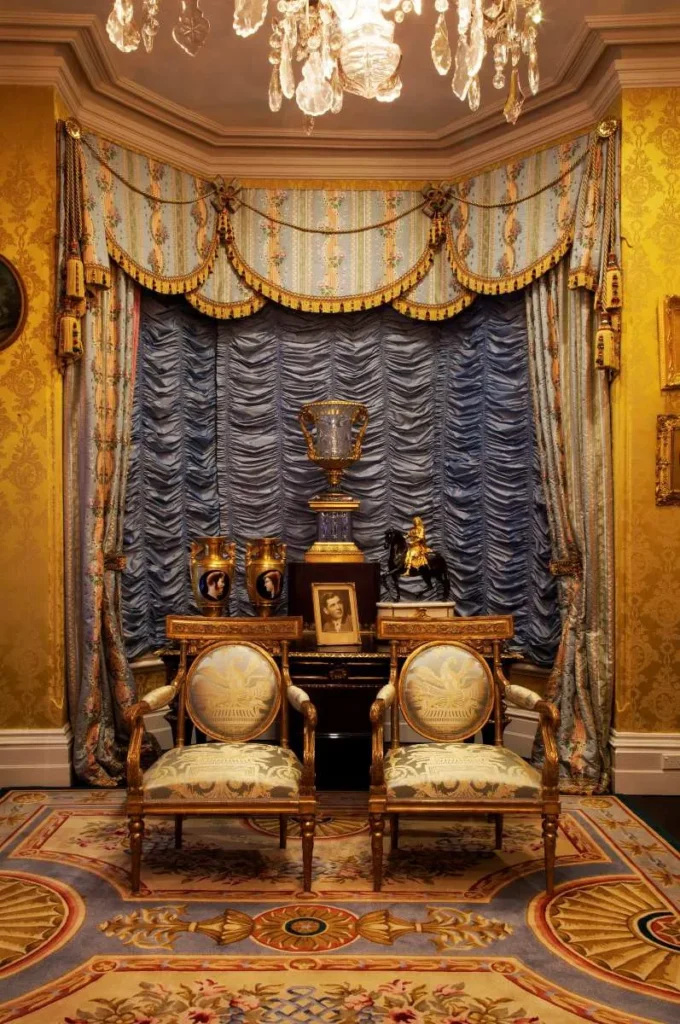
David had said he wanted the house museum to be an invitation to ‘Come into my home and share how I lived.’ The collection features French rococo and Russian Fabergé. Notable ceramics include Meissen, Chelsea, Sevres, Worcester and Gardner porcelain from the 18th century.
There is French, British and Russian furniture from the 18th and early 19th centuries in rococo, neoclassical, empire and regency styles. Many of the sculptures on display depict gods and figures from history and, as with his painting collection, horses and dogs. David’s ashes are stored in an 1830s Russian green malachite vase, housed in the museum antechamber.
The main focus of the collection is on European decorative art spanning a period from 1690–1920 — and includes clocks, textiles, paintings, furniture, English porcelain, and ornaments.
The simplest English pottery shares a stage with the Queen of Romania’s Fabergé parasol handle. Each piece was carefully curated by David Roche to fill a specific space, whether in the Chinoiserie-themed bedroom, with its bespoke de Gournay wallpaper; the military dining room; the formal yellow drawing room; or the Russian room decorated in the style of Empress Maria Feodorovna’s Pavlovsk Palace.
David Roche once said: “It took much persuasion for me to believe that my little collection was good enough to do more than give me pleasure.” But it seems it is. The gift of his estate and collection being one of the largest ever in South Australia.
David’s two greatest passions were dogs and antiques. He attended his first dog show at the age of nine and owned his first antiques at 17. He said his passions had much in common. “The ‘eye’ that is required to be a top dog judge can easily be applied to antiques. With the eye comes the ability to assess things quickly and easily.”
These passions took David around the world many times. He travelled regularly and for several months at a time – including England, the US and Canada, France, South Africa, Spain, India, Russia, Japan, Turkey, Singapore, Hong Kong and Malaysia, always with an eye to acquiring the best of the best or objects that took his fancy. Great works of art keep company with tin toys, making a tour of Fermoy House worthy of a history lesson and great entertainment.
Over the decades, David became Australia’s most prolific winner and generous supporter of canine prizes, dog parks, royal shows and all things ‘dog’ related. Antiques and dogs might seem an odd mix, but for David it was a great joy, particularly when collecting canine art. The David Roche Collection has a considerable and fine holding of bronzes, paintings, porcelains, Staffordshire ware and sculptures related to dogs; and animals in general.
Touring the David Roche Collection is an intimate affair. Guides take you through the home which is devoid of barriers, labels or didactic panels. They introduce you to items and to the collector: where he bought items, from whom, stories of his trips, judging and showing dogs, people he knew, and how he lived in his house. It is as much an experience about the man as the art, because people respond enthusiastically and somewhat stunned by what surrounds them.
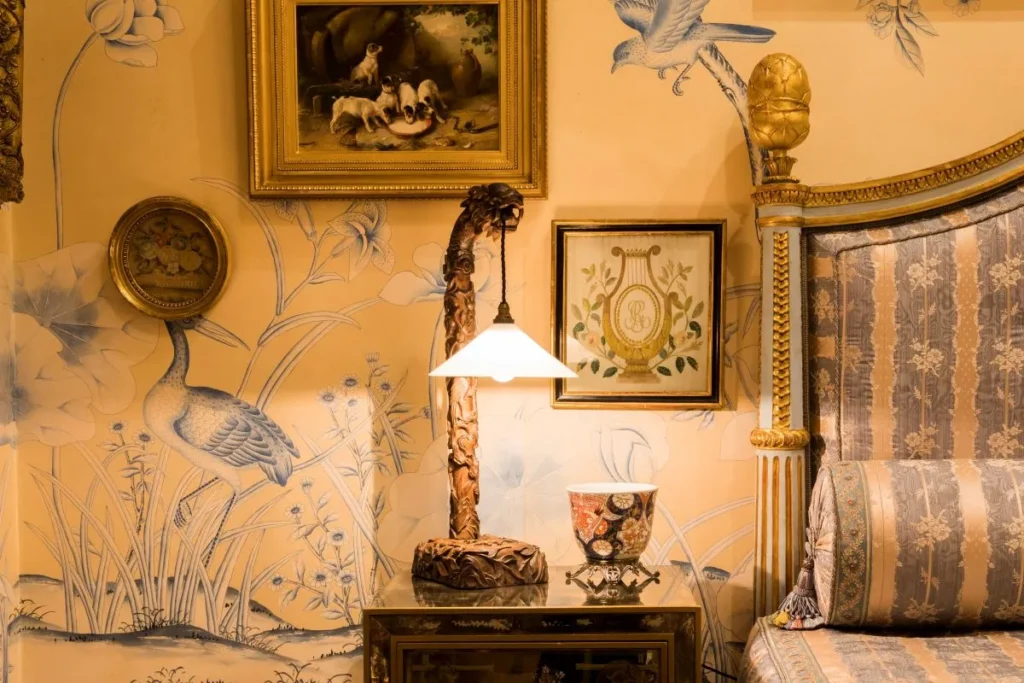
A tour of his home begins on the ‘Green landing’ with his collection of walking canes and reference library of Kennel Club journals, canine books and bronzes. The ‘Russian Room’ follows, themed from Pavlovsk Palace, St Petersburg and Maria Feodorovna. The room is centred with a Swedish chandelier and contains some of David’s most prized malachite objects. An important ormolu-mounted Secretaire by Noach Sorman and a portrait of Catherine the Great, attributed to Johann Baptist Lampi, are other highlights of this stunning room.
David’s most treasured room was his bedroom, filled with English Regency and French Empire period furniture, paintings and sculpture. Two Regency demi-lune vitrines display mainly English and European miniatures, objets, small bronzes and ceramics. The bespoke Zoffany ‘oak-garland’ wallpaper was ordered in Britain, and an exquisite set of curtains in the High-Regency style, created a room that David adored. It is filled with his favourite neoclassical paintings on themes of love, passion and duty.
His every-day and evening room, the ‘Den’ was David’s Englishman’s study. The walls are lined in green linen and devoted to images of racing, hunting, coursing and canine portraits. Pottery abounds and the furniture is English mahogany and rosewood. Pivotal to the room is Maud Earl’s c.1900 oil on canvas of A Pointer in a landscape at sunset, which David knew from the walls of the London Kennel Club. The formal drawing room is semi-French-themed and beautifully decorated in yellow-gold silk, selected by David with interior designer Angus Foulds. David acquired an important pair of Italian Mars and Minerva polychrome painted vitrines, c.1790, to display the finest of his European ceramics. In the bay window is an English ebonised Writing table, c.1815, with David’s superb Russian Vase, c.1830, behind on pedestal.
A more feminine room, designed for David’s mother, the ‘Chinoiserie bedroom’ contains European Chinoiserie as well as Chinese and Japanese art. An 18th-century rock crystal chandelier centres the room, and the walls are covered in de Gournay’s bespoke ‘Askew’ Chinoiserie-patterned wallpaper.
In contrast, the dining room with its blood red paper is completely masculine. The walls are adorned with portraits of officers, including George Dawe’s 1818 portrait of General Alava and paintings of regiments and horses. Of great interest is the large gilt-metal Argand lamp, designed by George Bullock and his breakfront sideboard.
The tour of the house ends in David’s kitchen, which is unlike any other. The printed-hessian walls and kitchen dresser support a showcase of nursery pottery, boxes, novelties, toys, mechanical money boxes and naive items that collectively found a place in this much-used room. The kitchen is a source of enchantment for visitors. His kitchen is truly ‘the hearth’ of his home, lined with mementoes from childhood, travels, and good times.
The way David Roche conceptualised and displayed his collection has been maintained: each room has a distinct theme and when acquiring pieces, David always had a room and place in mind.
The way David Roche conceptualised and displayed his collection has been maintained: each room has a distinct theme and when acquiring pieces, David always had a room and place in mind.
The new Gallery wing, consisting of three generously proportioned galleries, gives people a chance to relax after the visual overload of the house. Here, the collection or pieces loaned from other institutions and private collectors depending on the exhibition theme, are curated like an art gallery.
Visitors to The David Roche Foundation over the years include noted collectors, designers and celebrities: among them are fashion designer, Akira Isogawa, Prince Murat de Chasseloup Laubat; TV antique celebrities Tim Wonnacott from Bargain Hunt and Hilary Kay from The Antiques Roadshow; Ambassadors and Consul-Generals to Australia; and professional colleagues from around the globe, including the British Museum, The Frick Collection and The Met in New York.
“Over the past seven years the Museum has embedded itself in the cultural life of South Australians by offering contemporary exhibitions during the South Australian Living Artists (SALA) Festival as well as holding events as part of the Adelaide Festival, History Festival and Feast Festival”, said Robert Reason, Museum Director, The David Roche Foundation.
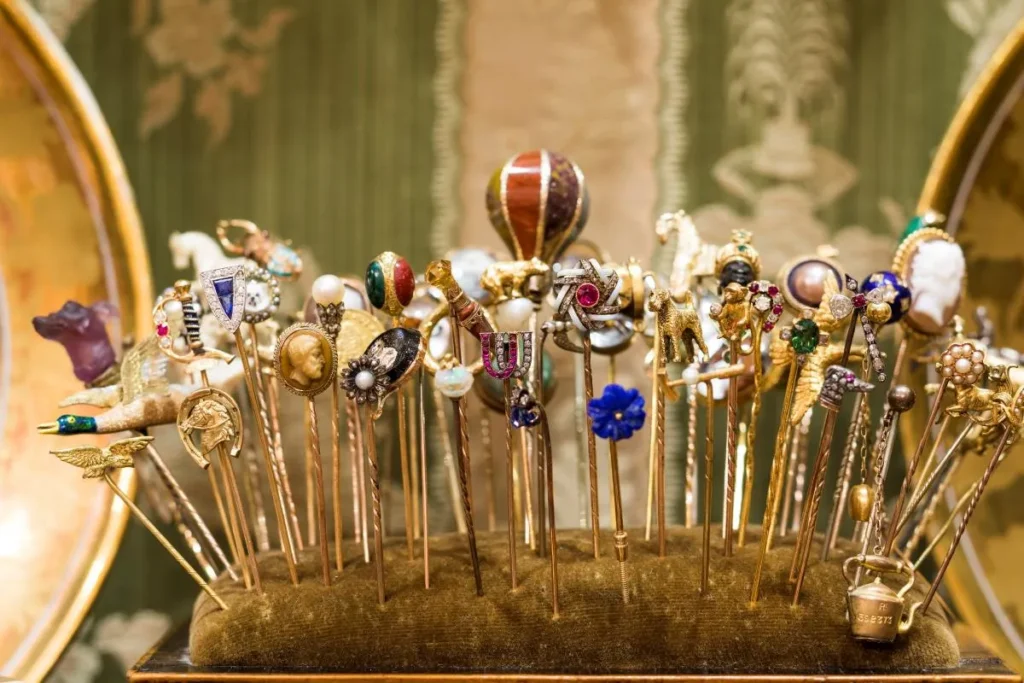
David Roche was posthumously awarded an AM (Member in the General Division of the Order of Australia) in June 2013 in recognition of his service to the community as a benefactor to cultural institutions, a significant supporter and figure in the canine world and for bequeathing his home and collection for the benefit of South Australia.
To see David’s remarkable collection, book a tour of Fermoy House, open Tuesday to Saturday from 10am to 4pm. Walk-ins are welcome in the Gallery and tickets to exhibitions can be purchased at the front desk.

